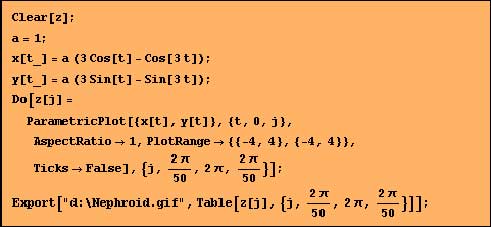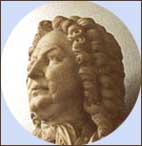|
For
Nephroids on the right. . . .
 |

Replay the animation of Freeth's Nephroid |
|
|
MATHEMATICA®Code
  |

|
| Historical Sketch The name nephroid means "kidney-shaped" from the Greek for nephróros meaning "kidney" and éidos meaning form. The nephroid was investigated extensively in the late 17th century. Earlier, an exchange of ideas among scholars centered on circles and cycloids. Mersenne, Galileo, Roberval, Descartes, Pascal, and Wallis among others, contributed to the discussion. Their successors naturally went on to identify more complicated plane curves with unique properties. For example, in 1692 Jakob Bernoulli (1654 - 1705) showed that when a light source is placed at the cusp of a cardioid, the catacaustic, or envelope of the family of reflected rays, is a nephroid.
|
| Some
of the more important historical publications: |
|
|
|
|
|
|
| A useful catalog of
curves can be found in older editions of the Encyclopaedia
Britannica. Search
under Curves, and/or Special Curves
written by R. C. Archibald. |
|
|
| http://www-history.mcs.st-and.ac.uk/history/Curves/Nephroid.html |
| http://mathworld.wolfram.com/Nephroid.html |
| Eves, Howard, An Introduction to
the History of Mathematics, 6th ed,. The Saunders
College Publishing, 1990. |
| Gray, Alfred, Modern Differential Geometry of Curves and Surfaces with MATHEMATICA®, 2nd ed., CRC Press, 1998, p. 898. |
| Lockwood, E. H., A Book of
Curves, Cambridge University Press, 1961. |
| Shikin, Eugene V., Handbook
and Atlas of Curves, CRC Press, 1995. |
| Yates, Robert, CURVES AND
THEIR PROPERTIES, The National Council of Teachers of Mathematics, 1952. |
|
Gus Gordillo, 2004. |

 Jakob
Bernoulli
Jakob
Bernoulli